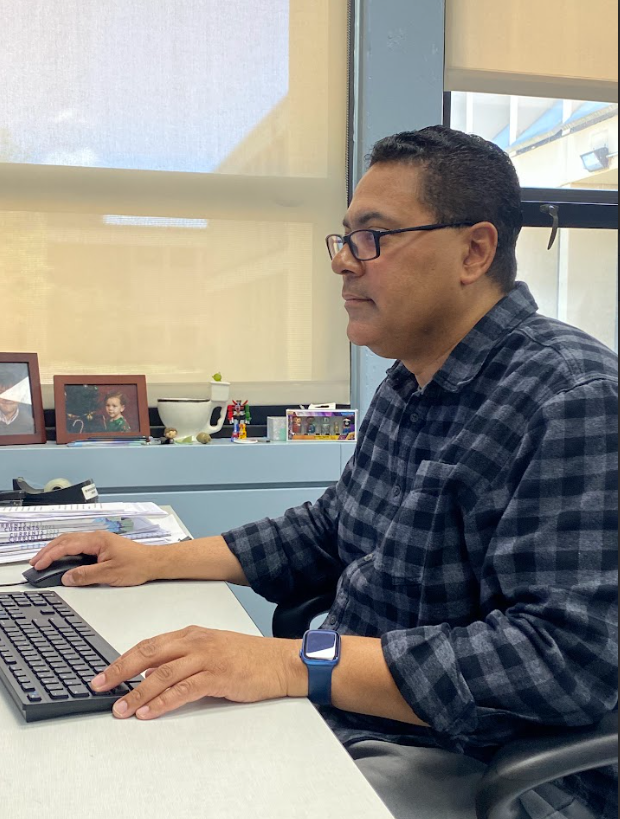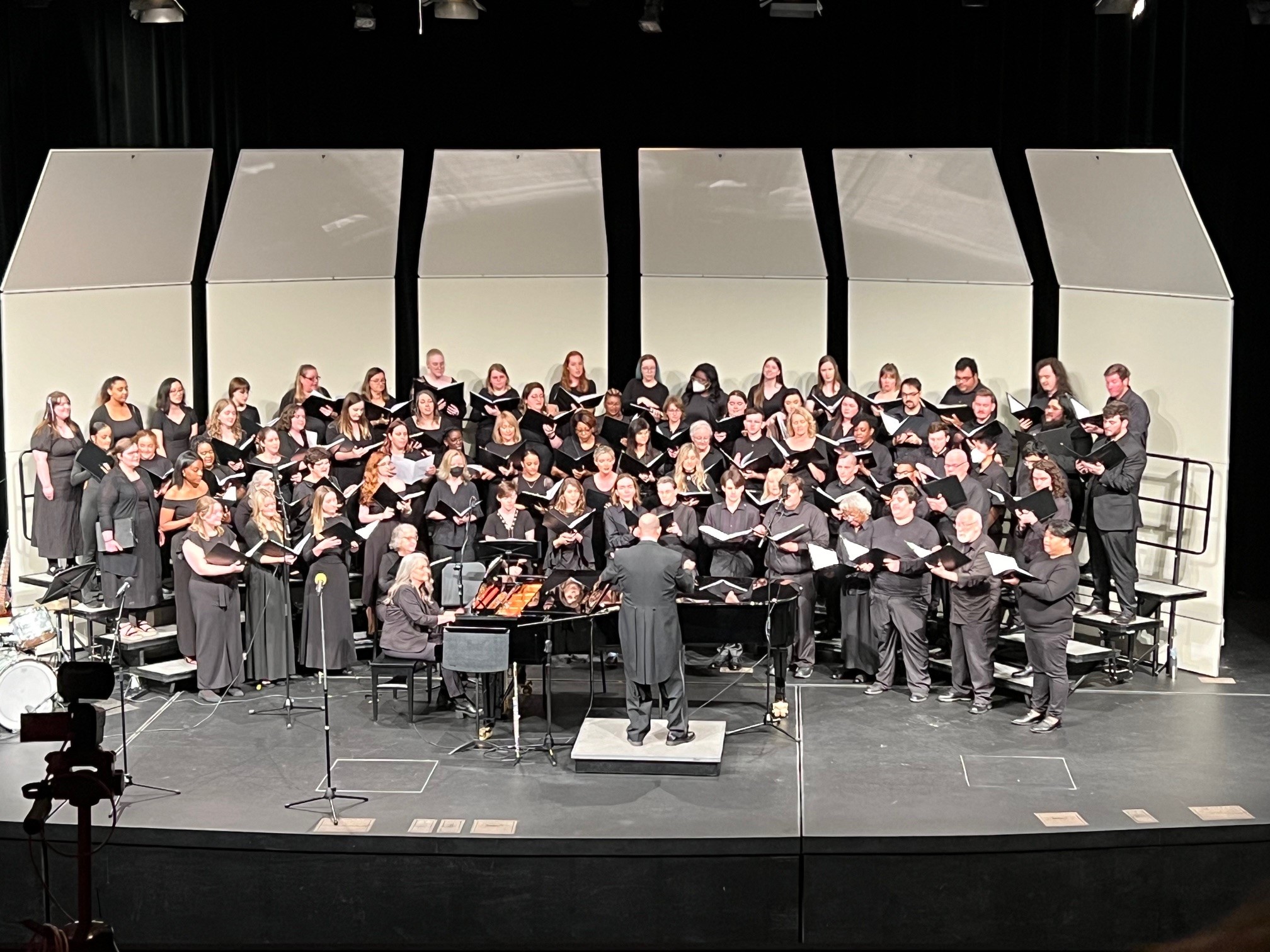On Friday, Nov. 11, Plympton, two-time Oscar and Academy Award nominee, took time out of his schedule to visit STLCC-Meramec to educate students and spectators of his technique and how to market themselves independently.

Kelly Glueck
-Managing Editor-
Bill Plympton rolled up his sleeves as he walked into Professor Bill Van Hoogstraat’s Drawing for Graphics classroom. There was no need for an introduction; students recognized Plympton through self-portrait promo posters that lined the walls of Humanities East.
Plympton’s recognition is not limited to a promotional poster, his illustrations can be found in past issues of Rolling Stone, Vogue, The New York Times and his notable personal achievement, Vanity Fair. His animated films, inspired by his illustrations, have been seen on MTV, and he is currently working on a TV show pilot and a feature film.
On Friday, Nov. 11, Plympton, two-time Oscar and Academy Award nominee, took time out of his schedule to visit STLCC-Meramec to educate students and spectators of his technique and how to market themselves independently.
Graphic design associate professor Chuck Groth worked with the St. Louis International Film Festival (SLIFF) team to coordinate the event.
“I had contacted him before because I thought he would be a perfect speaker to come because there’s such a wide interest – with animation students, illustration students, graphic design students and people that would love to see it. But it wasn’t going to fit into his schedule,” Groth said. “After several months I called him again and he made it work.”
Plympton has been in the St. Louis area doing a series of interviews, campus talks and picking up a lifetime achievement award from SLIFF. He is also the subject of a featured SLIFF documentary.
The documentary filmmaker Alexia Anastasio worked with Sarah Silverman, Terry Gilliam, Tom Kenny (the voice of SpongeBob Squarepants,) Weird Al Yankovic and countless others that Pylmpton has known and worked with. They can all be seen in Anatasio’s “Adventures of Plymptoons,” which premiered Saturday, Nov. 12 at Webster’s Moore Auditorium as a part of SLIFF.
Plympton made an appearance at Webster University the night before the documentary’s premiere.
“I do a lot of appearances at schools. That’s why this documentary will help spread the word about independent animation and adult animation, too,” Plympton said.
Adult animation in the United States has been a struggle for Plympton. He said that he is not interested in family films. He does not think about “laying with toys all day or Little Bear singing songs,” Instead, he thinks about adult concepts like love, lust and jealousy. He expressed his industry frustrations with the students in Bill Van Hoogstraat’s class.
“The tough thing in America is that there’s a consciousness that animation is only for children; it’s not for adults. I’m trying to break that attitude. In the states it’s really impossible to get distribution for my film,” Plympton said.
Plympton went on to discuss more of the frustrations of getting his work out there, all the while supporting himself financially.
“I would take my portfolio to different magazines that I thought might like my work, and quite frankly, initially it was quite difficult to get my work out there,” Plympton said. “I got in some big publications, but I had a lot of friends that were doing a lot of corporate stuff for tens of thousands of dollars and I could never get those big clients.”
However, in 2001, Disney Studios offered Plympton $1 million to come work for them. Disney would have rights to everything that Plympton created. He was adamant on continuing to create his quirky films the way he had envisioned them. For this reason, he decided to market himself as an independent.
“I don’t have to work for Disney to make films and it is possible to make money on your own films and it’s fun to draw,” Plympton said.
Plympton said that marketing yourself is the hardest part of the job. It involves looking for new ways to tells stories and looking for new ways to draw things. According to Plympton, innovation is the best way to really push the limits of animation.
Van Hoogstraat made note of the risk of creative failure and asked Plympton how he knows whether his film will be successful enough to support themselves.
“I test it. I show it to friends and anonymous groups and I get feedback throughout the entire process. I show the storyboard to people, I’ll show pencil tests to people and I’ll listen to their responses. Even after the finished product is done, I can go back and change things,” Plympton said. “I really want it to be a success for the audience and I want the audience to love it, because if the audience loves it, then I know it will sell.”
Plympton used his visit at Meramec as an opportunity to show his pencil tests for his up and coming feature film “Cheatin’.”
The film gave students and spectators a firsthand glance through Plympton’s creative process. Van Hoogstraat said that it was a great opportunity for students to see the process and how they can market themselves successfully.
“The time in class was immense because of some of the personal comments he made about marketing and his love for what he does. That’s worth its weight in gold to me, because I preach those things every damn day,” Van Hoogstraat said.
Plympton’s parting words encouraged students to continue practicing and to be aware of the things around them.
“Draw all the time. I always draw and I always have a sketchpad with me. Be observant and curious about how people move and talk and react. Write stories. Look at modern animation. It’s important that you know what’s out there,” Plympton said.
Graphic design student Greg McCrary was in attendance at Plympton’s campus talk and said Plypmton’s exaggerated caricature style and cheeky humor was right up his alley and that his advice for getting through a rough spot was valuable.
“When he was talking about getting back to drawing and figure drawing. I think that’s something I really took away. Also, that you don’t have to be a part of a big animation company to do what you like. That’s pretty cool,” McCrary said.











